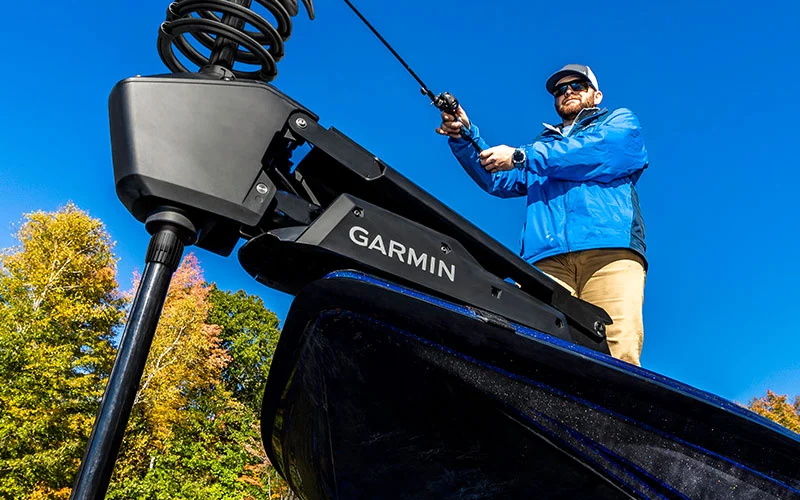
When you're out on the water, whether for competitive fishing or a relaxing day on the lake, knowing how long your lithium trolling motor battery will last is crucial. Run-time isn’t just a matter of convenience—it’s about confidence, safety, and maximizing your time doing what you love. In this guide, we’ll break down everything that affects the battery life of your lithium trolling motor system and show you how to accurately calculate run-time based on your setup.
The core of any battery’s performance starts with capacity, which is measured in amp-hours (Ah). Simply put, this is the total amount of electric charge the battery can deliver over time. A higher Ah rating means your battery can power your equipment for a longer period.
One key advantage of lithium batteries—especially LiFePO4 (Lithium Iron Phosphate) models—is their 100% depth of discharge. Unlike traditional lead-acid batteries, which typically should only be discharged to 50% to avoid damage, lithium batteries give you full access to their rated capacity without reducing lifespan. Additionally, they don’t suffer from a “memory effect,” meaning you can recharge them at any level without performance loss.
Your trolling motor’s power draw, measured in amps or watts, is the next critical factor. Manufacturers usually provide this in the product specifications. The higher the motor setting, the more power it draws.
Casual boaters and anglers often operate their trolling motors at 30–50% of maximum power, especially when cruising or maneuvering slowly.
High currents or wind conditions require more thrust, leading to higher amp draws and reduced battery run-time.
By understanding your motor’s power needs at different speeds, you can more accurately predict how long your battery will last.
It's easy to forget that your battery might also be powering other devices. Common accessories include:
Fish finders
Navigation or deck lights
Livewell pumps
GPS units
Each additional device adds to the total power draw. Ignoring these can lead to underestimating battery run-time and unexpected power loss during your trip.
To get a solid estimate of how long your trolling motor battery will last, use this simple formula:
Run-Time (in hours) = Battery Capacity (Ah) ÷ Total Current Draw (Amps)
Battery: 100Ah LiFePO4
Trolling Motor Draw: 20A
Calculation: 100Ah ÷ 20A = 5 hours
Trolling Motor: 20A
Lights: 5A
Fish Finder: 2A
Total Power Draw: 20A + 5A + 2A = 27A
Calculation: 100Ah ÷ 27A ≈ 3.7 hours (or approximately 3 hours and 42 minutes)
This gives a much more accurate picture of your realistic run-time on the water.
While math gives you a baseline, real-world usage often varies depending on conditions and user habits. Here’s what we hear from actual users:
50Ah LiFePO4 batteries: Often last through a full day of fishing, even with moderate accessory use.
100Ah models: Can comfortably power a trolling motor and multiple devices for 2 full days on a single charge.
Of course, your actual results may vary based on speed, current, wind, and accessory load.
Cold weather can slightly reduce battery efficiency. LiFePO4 batteries perform best in moderate conditions but are far superior to lead-acid in cold climates.
Proper charging and maintenance play a big role in longevity. Always follow the manufacturer’s guidelines for charging cycles and storage to keep your battery performing at its best.
Not all trolling motors are created equal. More efficient models will draw less power at the same thrust level, extending battery life.
Use a battery monitor to track real-time amp draw and voltage.
Charge your battery fully before each trip.
Avoid overloading with unnecessary electronics.
Match your battery size to your typical fishing duration and motor specs.
Invest in quality wiring and connectors to reduce energy loss through resistance.
Knowing your lithium trolling motor battery run-time allows you to plan smarter and stay out longer. By understanding how battery capacity, motor power draw, and other electronic demands work together, you can eliminate the guesswork and enjoy your time on the water worry-free.
Whether you’re running a compact 12V 50Ah battery or a heavy-duty 36V 100Ah system, the key is calculating your total power needs and choosing a battery that fits. With the right setup, you’ll spend more time fishing—and less time charging.
Next:How to Check the Positive and Negative Poles of a Button Battery Easily
Previous:how long do golf cart batteries last
Contact Person: Miss. Elsa Liu
| WhatsApp : | +8617763274209 |
|---|---|
| Skype : | +8617763274209 |
| WeChat : | 17763274209 |
| Email : | Elsa@lifepo4-battery.com |